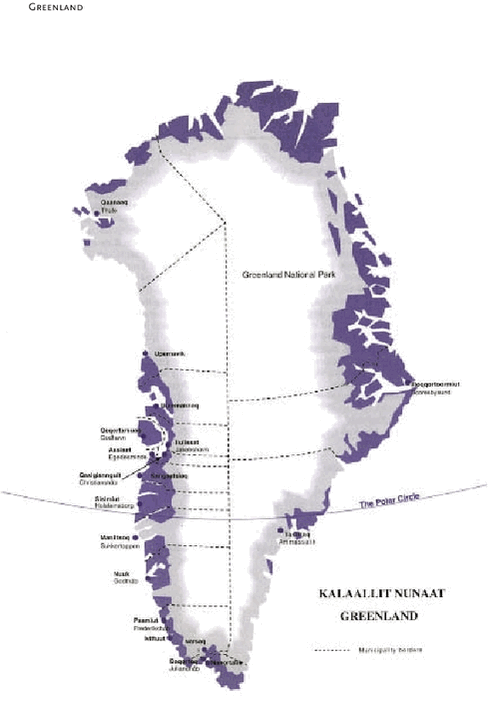AMAP Greenland and the Faroe Islands 1997-20011 Danish National Report Introduction1.1 Major achievements in the International and Danish AMAP Human Health Programme during Phase 2.1.2 New results. 1.2.1 Monitoring of exposure: 1.2.2 Effects of exposure: 1.3 The National Report. 1.3.1 Greenland. 1.3.2 The Faroe Islands. In the Phase 2 of AMAP the mandate of the Human Health Expert Group (HHEG) was extended from monitoring and assessment of human contaminant exposure to, in addition to assess effects of multiple environmental stressors. As a consequence the aim of the International Human Health Report has been to provide an overview of the combined effect of environmental and societal factors on human health. The scientific background to fulfil this task is not sufficient at present, however, the report is a step forward in the right direction The present national report follows the attempt from the international report to provide an integrated assessment of exposures to contaminants and measures of effect both at the epidemiological and the molecular level.. 1.1 Major achievements in the International and Danish AMAP Human Health Programme during Phase 2.The monitoring programmes have been extended to be almost circumpolar also on a regional basis and a considerable amount of new data on human exposure levels have been obtained including Greenland and The Faroe Islands. This has created a better basis for assessment of exposure levels regionally. Also dietary surveys have been extended and provided more detailed information on dietary habits, which in combination with more data on contaminant concentrations in food items has improved the possibilities to make realistic exposure estimates. The second major achievement has been the development and implementation of a human health effect programme. The programme is so far not implemented in all key sampling areas. In Greenland the effect programme has concentrated on biomarkers of effect at the molecular level while in the studies in the Faroe Islands programme the epidemiological approach has been prevailing. Both types of effect programmes should be continued and expanded in a continued and coordinated way. A third achievement has been the establishment of an analytical quality and control group to advise the HHEG. All laboratories producing data for the AMAP Human Health Assessment have to participate in the intercalibration programme run by the group. 1.2 New results.1.2.1 Monitoring of exposure:Monitoring of POPs (14 PCBs, 11 pesticides), heavy metals (mercury, cadmium and lead) and the essential micro nutrient selenium has continued. In addition also biochemical indicators of diet (plasma-fatty acids) and of smoking (plasma-cotinine) have been measured in some areas. The extended data sets obtained during phase 2 have confirmed the results from phase 1 that in the Arctic traditional food is the main source of human exposure to most contaminants. In a number of communities in some areas of the Arctic dietary intakes of PCBs chlordanes, and mercury exceed established national and international guidelines. So far it has not been possible to establish real time trends due to the short period of observation. 1.2.2 Effects of exposure:At the epidemiological level there is evidence of subtle developmental effects in children following exposure to mercury and PCB‘s due to their neurotoxic effects, also evidence of impaired immunodefence in children has appeared. Resent data, using serum samples from Greenland, have indicated that the concerted action of accumulated POPs in the samples excerts an inhibitory effect on the estrogen receptor in human cells. 1.3 The National Report.The present report is a compilation of data generated in the programmes carried out under the AMAP Human Health Programme in Greenland and the Faroe Islands during the interim year 1997 and during the phase 2 of AMAP 1998 to 2002. As the activities are a continuation of the phase 1 programmes the results from this period are also to some extend incorporated for comparisons. 1.3.1 Greenland.The scope of the investigations in Greenland during the reporting period have been to provide an overview of geographical differences in human exposure, to perform estimates of dietary exposures to contaminants further to investigate the influence of life-style factors on body retention of persistent organic pollutants (POP‘s), and to implement the Human Health Effect programme adopted by the international AMAP Human Health Group (HHEG). As a pilot study on spatial trends carried out in the interim year 1997 demonstrated the highest exposure levels to be found in the two East Greenland districts Ittoqqortoormiit and Tasilaq the main efforts has been to document the preliminary findings and to study biomarkers of effect in these highly exposed population groups. 1.3.2 The Faroe Islands.The activities in the Faroe Island have concentrated mainly on kohord studies to evaluate mercury exposure in relation to consumption of pilot whale and to a lesser degree on POP exposure the results form the Faroe Islands are described in Chapter 6 (P: Weihe) Chapter 7 (E. Bonefeld Jørgensen) describes the human health effect biomarker programme and the progress so far obtained. A general summary of conclusions and recommendations from the international assesment and specific conclusions and recommendations for Greenland and The Faroe Islands is given in Chapter 8. |
